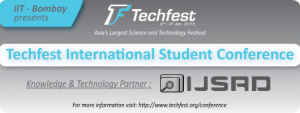International Journal For Scientific Research & Development
Author(s):
Paridhi Pachori , College of Engineering, Bharati Vidyapeeth University, Pune
Keywords:
Alzheimer Disease, Mine Blood Donors Information, Clustering Algorithm
Abstract:
The number of accidents and health diseases increasing at an alarming rate has resulted in a huge increase in the demand for blood. There is a necessity for the organized analysis of the blood donor database or blood banks repositories. Clustering analysis is one of the data mining applications and K-means clustering algorithm is the fundamental algorithm and traditional approach for modern clustering techniques. The K-means clustering is an iterative algorithm which attempts to find the distance from the centroid of each cluster to each and every data point at every iteration. This paper gives the improvement to the original k-means algorithm by improving the initial centroids with distribution of data. Results and discussions show that improved K-means algorithm produces accurate clusters in less computation time to find the donors information.
I. INTRODUCTION
Data Mining is defined as mining of knowledge from huge amount of data. Using Data mining we can predict the nature and behavior of any kind of data. The past two decades has seen a dramatic increase in the amount of information being stored in the electronic format. This accumulation of data has taken place at an explosive rate.
Cluster Analysis of a data is an important task in Knowledge Discovery and Data Mining. Clustering is the process to group the data on the basis of similarities and dissimilarities among the data elements. Clustering is the process of finding the group of objects such that object in one group will be similar to one another and different from the objects in the other group. A good clustering method will produce high quality clusters with high intra cluster distance similarity and low inter cluster distance similarity. Similarity measure used is standard Euclidean distance but there can also be other distance measures such as Manhattan distance, Minkowski distance and many others.


 Techfest International Student Conference presents a unique opportunity for students to present their work in front of fellow students, senior professors from top universities, industrialists and policy-makers. It aims at giving recognition to students for their research at a relatively young age. An enriching experience to research oriented minds, TISC will give young scientists an insight into the topic, learn new ideas and build networks beneficial for the future.
Techfest International Student Conference presents a unique opportunity for students to present their work in front of fellow students, senior professors from top universities, industrialists and policy-makers. It aims at giving recognition to students for their research at a relatively young age. An enriching experience to research oriented minds, TISC will give young scientists an insight into the topic, learn new ideas and build networks beneficial for the future.